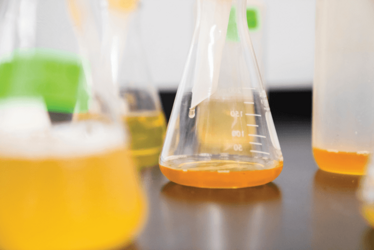
Press It! Plug It! Play It!
A new automated chemical synthesis machine aims to remove some of the repetitive processes from a scientist’s day
The laboratory: the place where scientists collaborate, develop groundbreaking technologies and overhaul our understanding of life. It goes without question that the lab can be an exciting environment, but chemists can also vouch for the fact that many of the essential processes required to advance their field are repetitive... Monitoring reactions and iterative optimization are crucial processes, but they prevent scientists from focusing on the more innovative aspects of science.
Researchers at the Massachusetts Institute of Technology (MIT) have developed a continuous-flow chemical synthesis system that makes it easier for scientists to identify the conditions for making their molecules of interest. “The technology makes use of optimization algorithms and works while scientists do other things,” says Timothy Jamison, professor of chemistry at MIT. “It’s so important for scientists to be able to be able to work creatively and think of new areas to investigate; and this automated system will free up time, enabling them to focus on the human parts of research. This can cut the amount of time required to optimize a new reaction from weeks or months down to a single day.”

The system is made up a series of modules that can be used in conjunction with one another to allow scientists to initiate a myriad of protocols. A graphical interface allows users to initiate optimizations, monitor progress remotely, and analyze results. Once the procedure has been optimized, subsequent users simply need to download an electronic file (which Jamison describes as being similar to a smartphone app) to use the procedure on their own apparatus.
“The modular components can be used in any order and any combination by plugging them into the system via a universal connection, similar in concept to a USB port,” says Jamison. “Experimental results and system parameters can also be transferred seamlessly between scientists. Sharing and discussing information and results with colleagues is such an integral part of our work; I anticipate that facilitating knowledge transfer will be another benefit of this approach.”
Jamison is now focusing on refining the platform, expanding its capabilities and making it easier to use. “Our goal is to make it easier for scientists to make the molecules they need for their research,” he says. “If we can expand the reach of this technology, I really think we could see a marked improvement in the pace of research and discovery.”
- AC. Bédard, A. Adamo, et al., “Reconfigurable system for automated optimization of diverse chemical reactions,” Science. 361, 1220-1225. (2018). doi:10.1126/science.aat0650.



















